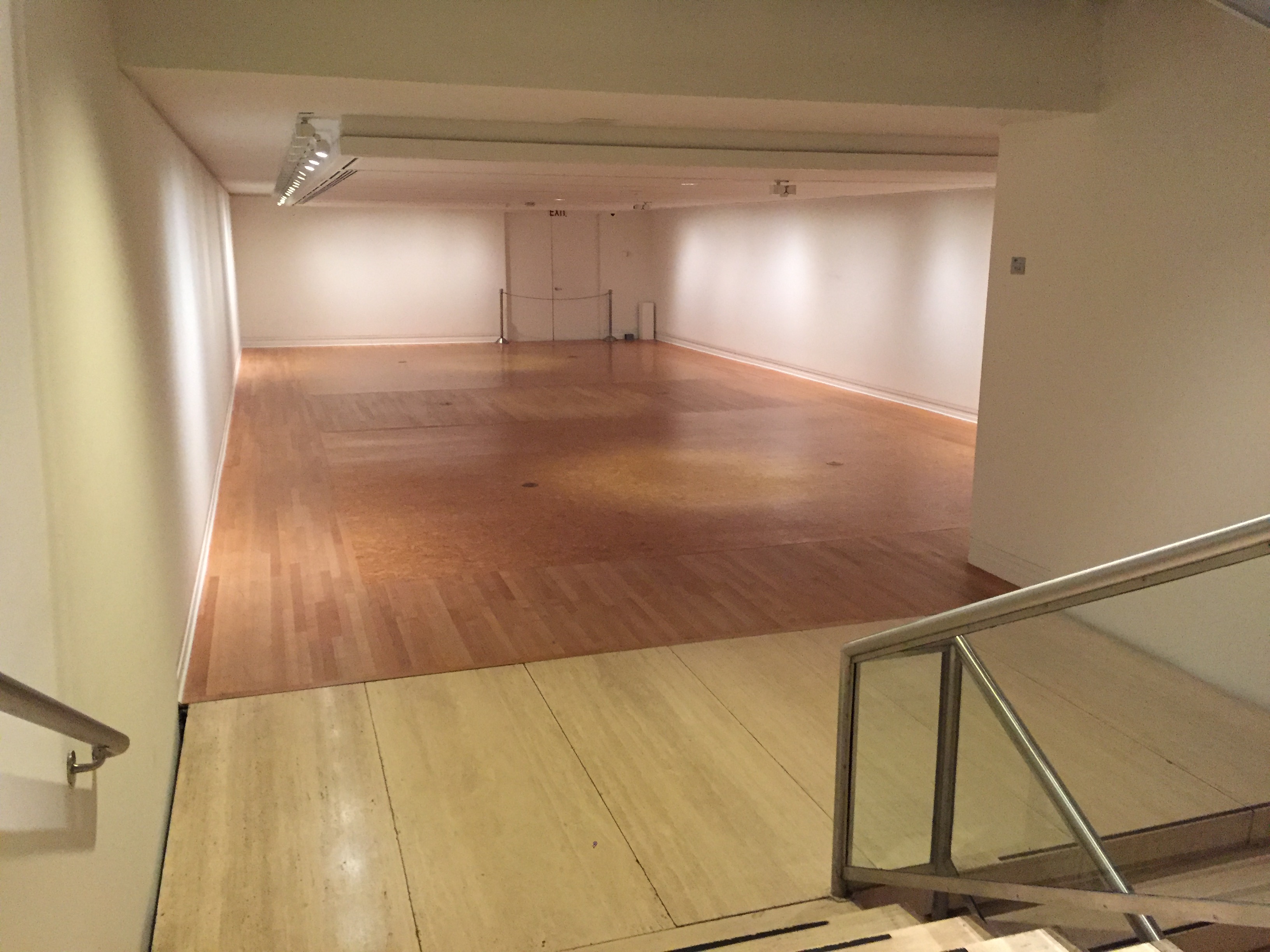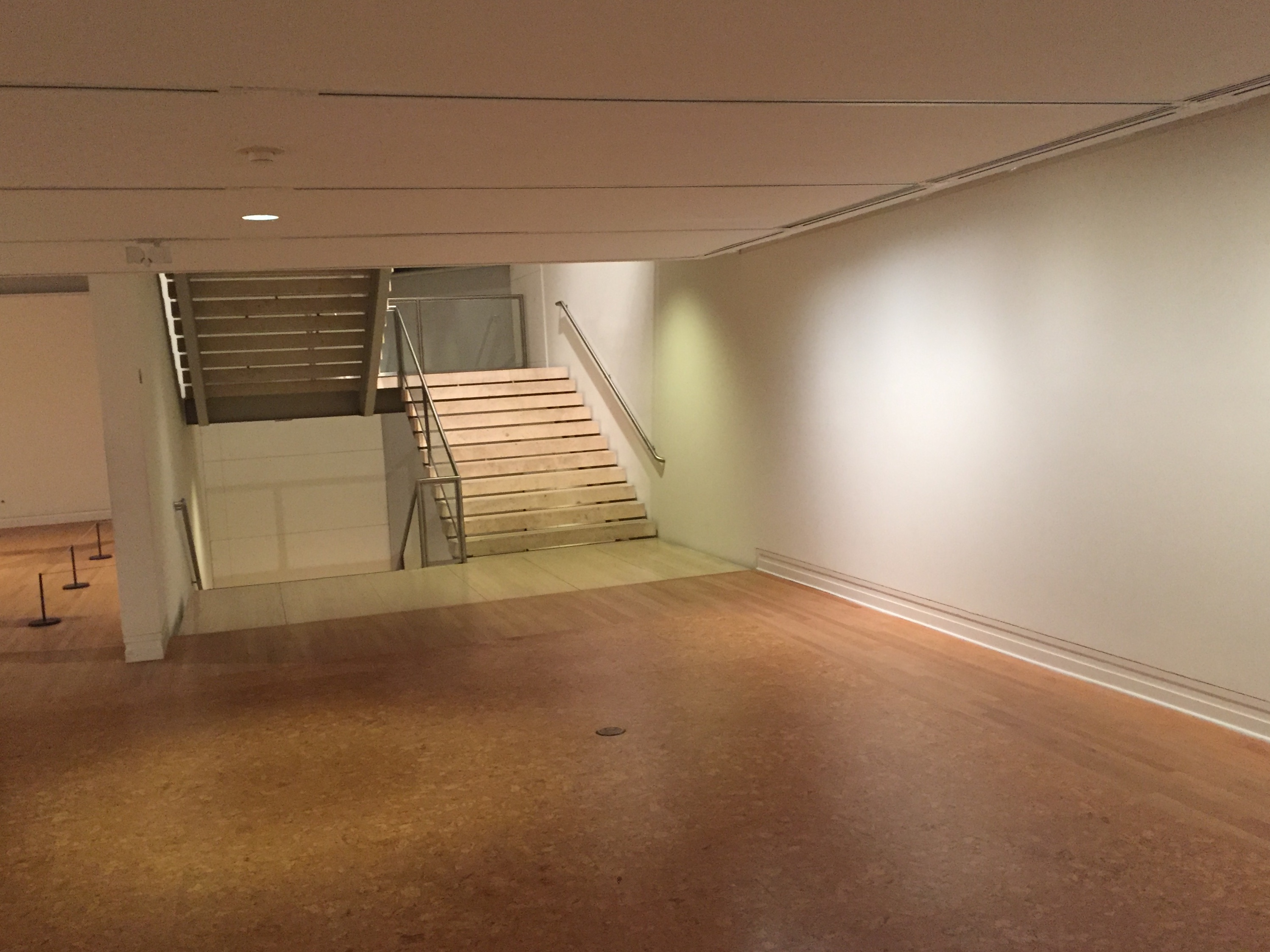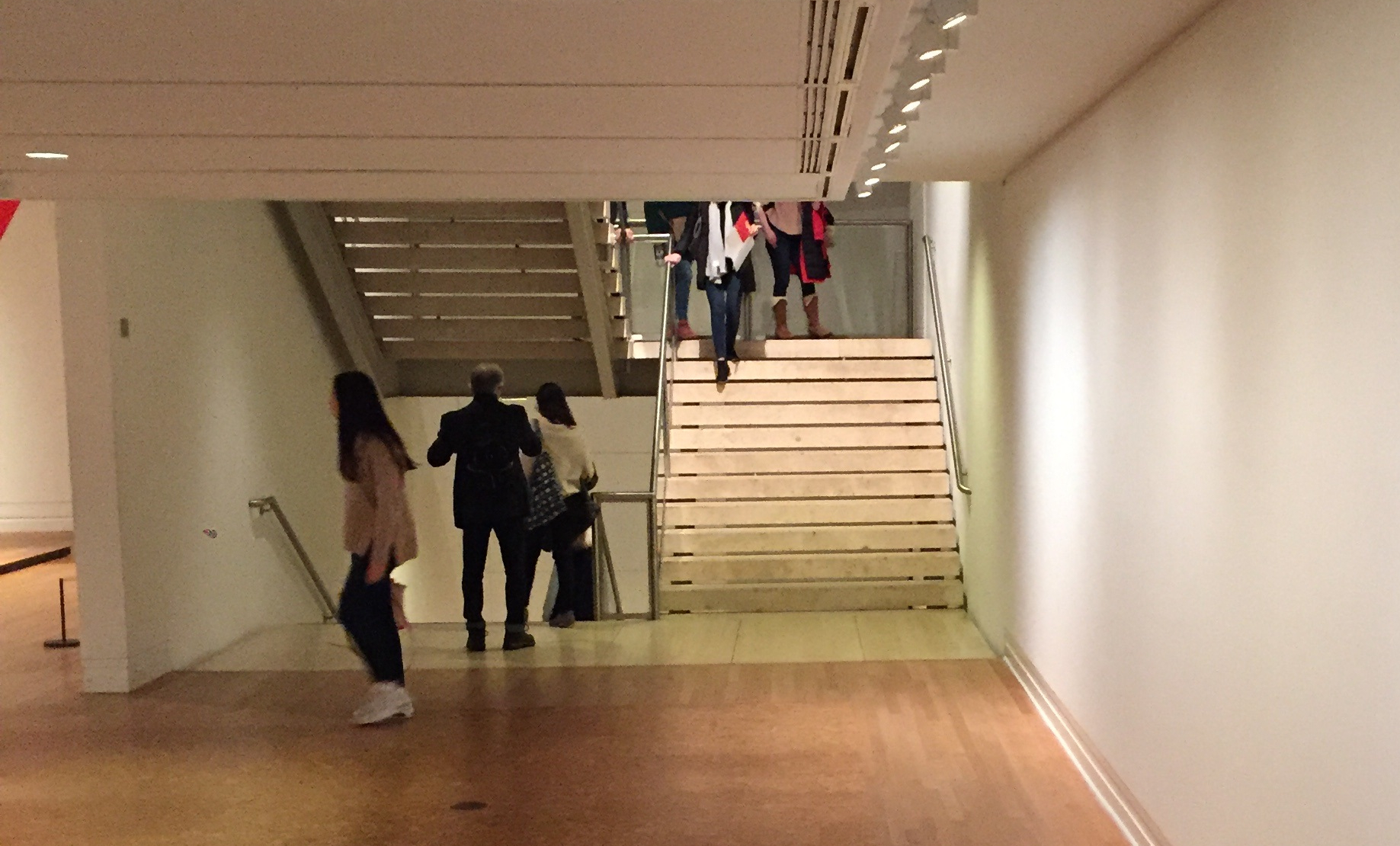It’s a little embarrassing to talk about. But it’s super exciting news, so here it is. The Metropolitan Museum of Art in New York has accepted one of my pieces. The. Metropolitan. Museum. Of. Freakin. Art.
Not only one of my pieces, but the first work I’ve ever done. How does that happen?
Well, let me tell you. In late June, I get a call one afternoon from Phyllis Neusbaum-Finley, head curator of the Met’s “Way Beyond Post Modernism” collection and asked if I was interested in discussing their desire for one of my pieces. It was kinda like when the President of the United States, the Pope, or David Lee Roth calls you to chat and you think it’s your buddy Derek pranking you. But you can’t hang up of course. What if…?
So I ask Ms. Neusbaum-Finley which of my works she’s interested in. (You can’t be a player if you don’t sound like a player, right?) She said she’d heard about the conceptual piece I was calling “Empty Space: A Phenomenological Consideration of Post Structuralist Potentiality.” She said they wanted to make it central in her collection and asked what it would take to acquire it. Totes exploding inside, I played it super cool on the outside. I told her I appreciated her call but was meeting friends for nachos supreme and drinks in just a sec and “could we talk tomorrow”? I called her back three day’s hence. Coy worked.
The installation debuted October 1. Let me tell you about it. This is it. I think it turned out just I had envisioned it down to the Nth degree.

The viewer not only views it, but actually inhabits it. Ontologically, existentially, metaphysically.
I’ve always dreamed of working with empty space as my medium. The work derives inspiration from the experimental intersection of the Hyper Minimalist and Post Content schools. It calls us to consider that art can be literally nothing, for nothing is the biggest something there is. It forces us to ask whether empty space itself and the potentiality it provides can be the purest of all art? It’s a rhetorical question of course. It’s not polluted by anything. It just is. It speaks for itself. It needs no defense.
My work doesn’t force a culturally fixed conception of reality (or anything else for that matter) upon the viewer. It holds no one captive with its expectations or need for interpretation. I resist enforcing the experiential domination of my own limited life interpretation. Even worse, that perspective is historically and culturally determined by my white, heterocentric, gender-binary, male privilege. I’m a man who now gets the senior discount at fast food establishments simply because I’ve lived longer than others. Such favoritism in the capitalist system cannot help but infect any physical art I would actually create myself. So I refuse to use all this privilege as a blunt object of colonialist structuralism upon the intriniscally oppressed who lack the sophistication to realize they are being played by everyone else’s art. It’s my small, humble offering to continuing human evolution.
The power of my art is not so much in what it does say, but in what it doesn’t. It’s mutism. No, Proto-voice challenged.
I’ve become increasingly troubled by every bit of art ever created and thus it’s artists. The lines. Colors. Structure. The material physicality. Light. Its demand for perception. By their very nature, they are all limiting, controlling, defining, and despotically oppresive. That each piece of art ever created declares “I am this and not that” is self-evident. Every piece of art casts its own judgement upon every other. It’s true. Joseph Havel’s Veil VI denounces Jasper John’s White Flag as far too ambitious and thus imperialistically elitist.
Duchamp was a power-hungry anarchist. He thought (knew!) his Readymades grabbed his viewers by the throat, slapped them around and dumped their bruised, exhausted bodies where he found them. He believed they were all the better for it. Warhol? Ditto. Pollock. He was particularly thuggish. They each proclaimed “Beauty is an illusion. Anything can be art.” If you happen to see Duchamp’s Bottle Dryer as beauty, he’ll have something to say about it.
Their disciples are the artistic equivalents of the sexualized power structure that required the intervention of #MeToo. They are patriarchal. Self-indugent. Abusive. Controlling. Consumers. In fact, every piece of art ever created is precisely this, however you might choose to define art. In its mere physical materialistic presence it is unavoidlably phallic. It inserts itself, presses itself in upon reality without the viewers clear, spoken or written consent. All art rapes the sensibilities and does so to the perverted, pleasurable delight of its artist. It’s so obvious, become such a part of art that its no surprise we’ve looked right past it until now. Lee Krasner, Frida Kahlo, Georgia O’Keefe, Mary Cassat and their sisters? They get no pass here. They were either willing participants in the oppression or unwitting dupes. Either fact is without excuse or defense.
As sure as I’m an artist, I must object. I refuse to be a part of it, ergo, my present work.
My work breaks us free from the unspeakable abuses of the content-based artists. Pure space is the future of what art and truth are. It is true freedom, pure subjectivism. It is the only form that respects the experience, nay, the dignity and determinative self autonomy, of the viewer. Space truly makes no judgments, demands no conclusions, requests no expectations. Its nothingness harms nothing. It should not be missed that it is the only art form that solves our present apocalyptic problems of climate change, the destruction of the Amazon rainforest, plastic straws and people who refuse to use another’s proper pronouns. Its transformative potential is limitless because the art form is. Literally.
And no, it doesn’t bother me in the least that people haven’t been coming to see my work.

I do not take it personally that they don’t appreciate it. So what if they walk by the installation Ihave been working on for the last decade as if it were just nothing.

I know what they’re thinking: “Uhm, I wonder what’s going to go here?” That’s their interpretation of my work and theirs is just as legitimate as mine. What I care about is that I got them to think and think about space, that space points us toward the potential of the future and our individual and collective places in that future. For the humble artist, that is a good day’s work.
Likewise, I don’t mind that the janitorial staff comes every other week to dust mop the floor, thinking it’s just another floor to keep clean. The fact is the space provides them the palate upon which to declare to the universe that human labor, regardless of how small and tedious, has great dignity. Isn’t this what Marxism was all about anyway? It provides the stage for their own phenomenological performance art. And their humble mops actually transform the art itself. Its holistically participitory. What artist cannot be touched by eliciting that kind of experience with andreaction from the human soul? Not me.
So please, come see my piece, let it transform you as it transforms the totality of art, past, present, and future. It runs through Spring 2020. But sure to purchase the exhibit’s official t-shirt on the way out. The uninitiated will think it’s just a $45 white Fruit of the Loom textile, but now you know it is so much more. It’s a declaration of independence from the physical assault of content-based art.